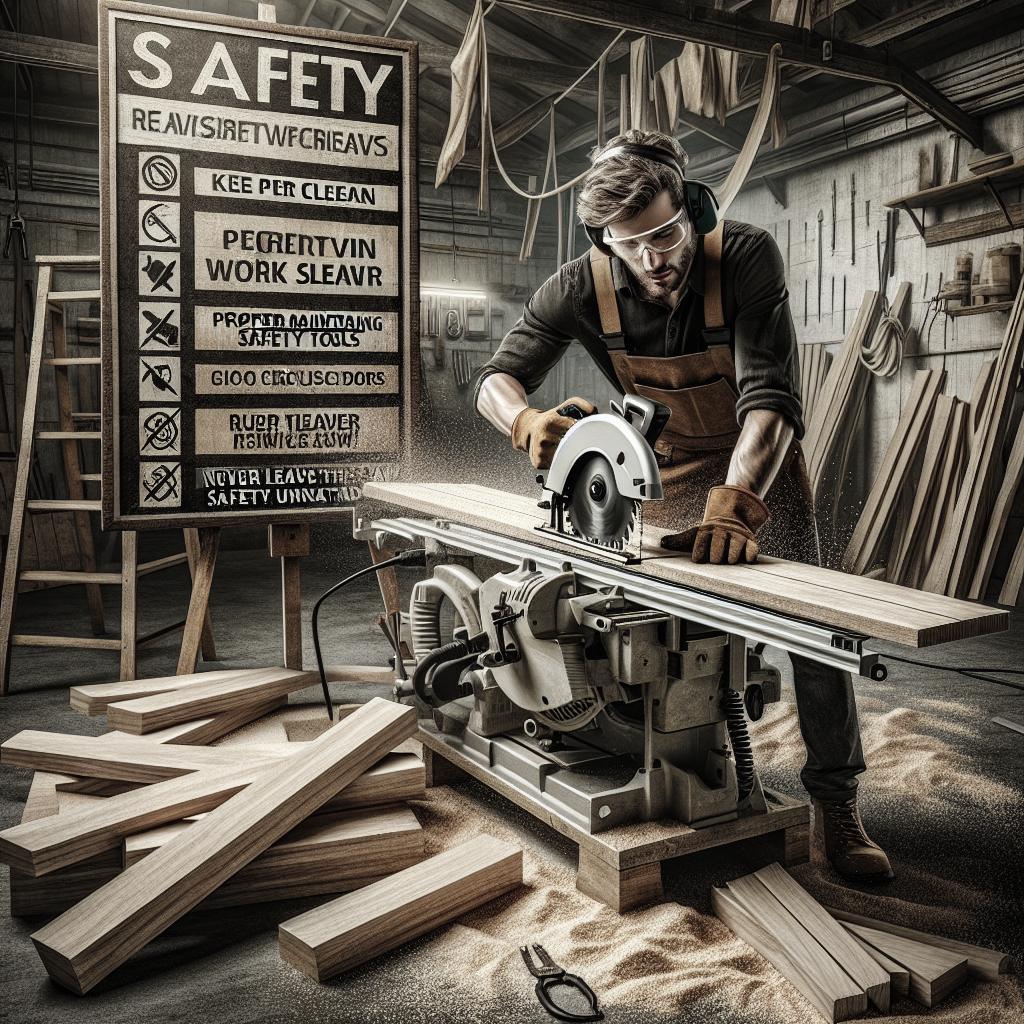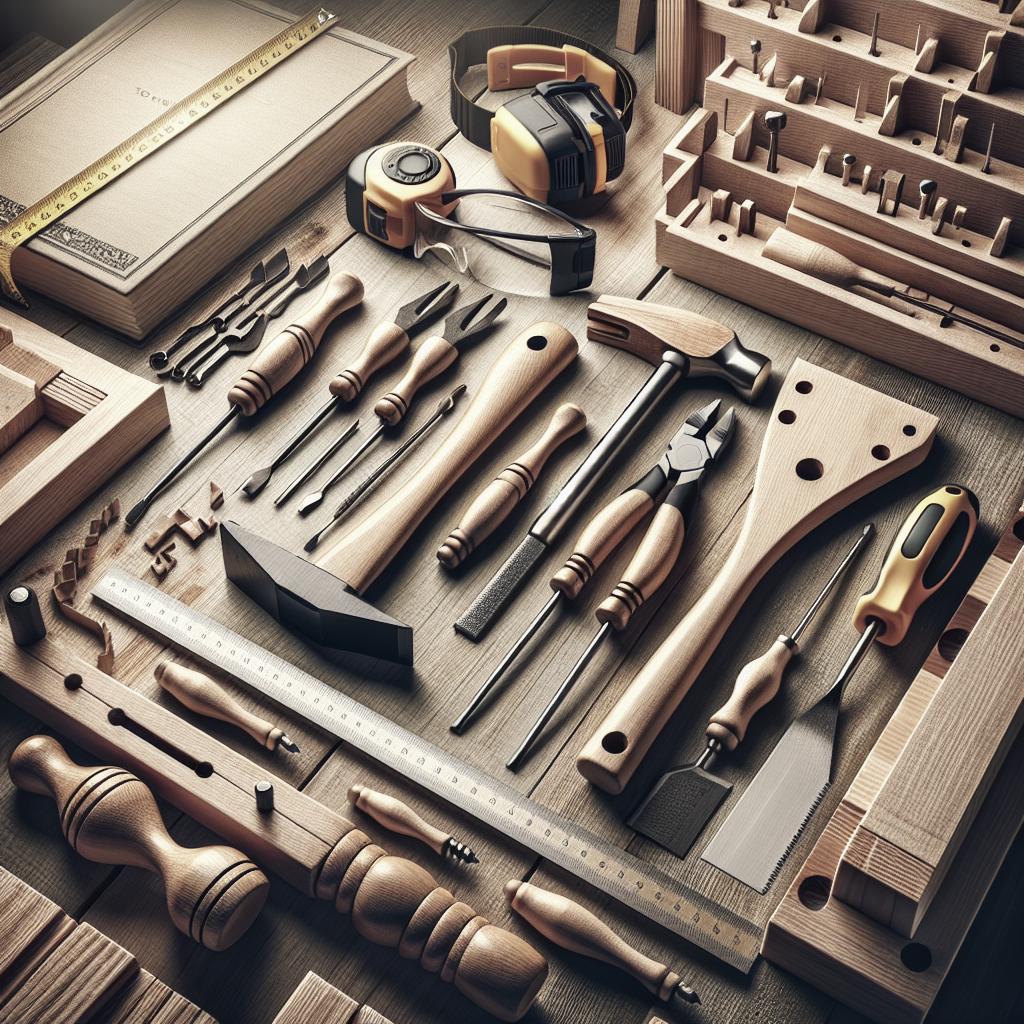“`html
Safety Tips for Using a Circular Saw
When it comes to handling power tools, the circular saw is a common choice for both professionals and DIY enthusiasts due to its versatility and efficiency. However, with great power comes the need for great responsibility and safety precautions. This comprehensive guide aims to provide crucial safety tips for using a circular saw effectively and without injury. We’ll cover what you should do before starting to cut, how to work safely while using it, and the critical mistakes to avoid. Whether you’re a seasoned carpenter or a novice woodworker, understanding these safety tips can protect you from accidents and ensure your projects are completed successfully.
On This Page
- What Should You Do Before Starting to Cut with a Circular Saw?
- How to Work Safely with a Circular Saw?
- What to Avoid When Cutting with a Circular Saw?
What Should You Do Before Starting to Cut with a Circular Saw?
Preparing your workspace is the first step to ensuring safety when using a circular saw. Ensure the area is clean, well-lit, and free of tripping hazards to prevent accidents. Make sure the material you’re cutting is securely clamped and stable to avoid kickback or slippage during the cut. In addition, inspect your circular saw to ensure it’s in good condition; check for any damage and ensure that all safety features like the blade guard are functional.
Another critical preparation step is to wear the appropriate personal protective equipment (PPE). Safety glasses or goggles are a must to protect your eyes from dust and debris. Hearing protection, such as earplugs or earmuffs, is also recommended as circular saws can be loud enough to damage your hearing with prolonged exposure. Lastly, wear snug, non-loose clothing and sturdy work gloves to protect your hands while maintaining dexterity.
It’s important to understand the specific model and adjustments of your circular saw before you begin. Read the user manual to comprehend safety instructions and unique features of your tool. Adjust the blade depth to slightly deeper than the material thickness for optimum cutting performance. Likewise, ensure the power cord is positioned safely to avoid accidental snags or cuts.
How to Work Safely with a Circular Saw?
Once you are ready to cut, maintain a secure and well-balanced stance. Stand to the side of the blade to keep away from the line of cut and any potential debris that could be thrown up by the saw. Keep both hands on the saw during operation; one on the trigger switch and the other on the front knob handle for better control.
Engage the saw with the material slowly and avoid forcing the cut. Let the saw’s power do the work for you. For precision, follow your guideline carefully, and consistently apply pressure as needed, maintaining an even speed throughout the cut. Be cautious of any knots or hard spots in the wood, as these can cause the saw to bind or kick back.
An additional safety tip is to always make sure the saw blade has stopped spinning before setting the tool down. The inertia from a continuously spinning blade can cause the saw to “walk” or kick suddenly if not positioned securely. Also, never attempt adjustments on the saw or its blade while it’s plugged into a power source.
What to Avoid When Cutting with a Circular Saw?
A common pitfall when using a circular saw is neglecting to check for nails, screws, or other foreign objects in the material before cutting. These can potentially damage the blade, cause breakage, or result in dangerous flying debris. Always inspect your cutting line and remove any obstacles or metal fasteners before starting.
Another critical mistake is using the wrong blade for the material. Always ensure that the blade type and its condition are suitable for your task. A dull or inappropriate blade can lead to erratic cuts and increased chances of kickback, putting the user at risk. Keep your blades sharp and replace them when necessary to maintain performance and safety.
Finally, a careless habit to avoid is leaving the saw plugged in when not in use or during blade changes and adjustments. This can lead to unintended starts, which pose a significant risk. Cultivate the habit of unplugging your tool from its power source whenever it’s not actively being used or adjusted.
Summary of Main Points
| Topic | Key Points |
|---|---|
| Before You Start | Clean workspace, inspect saw & blade, wear PPE, adjust blade depth, read user manual |
| During Operation | Maintain balance, use both hands, engage material slowly, control speed, let blade stop completely before setting down |
| What to Avoid | Check for foreign objects, use the correct blade, unplug when not in use |
“`


